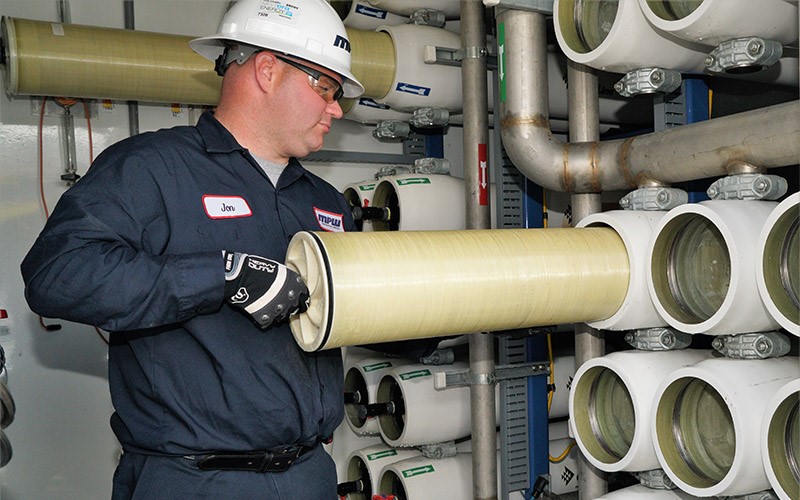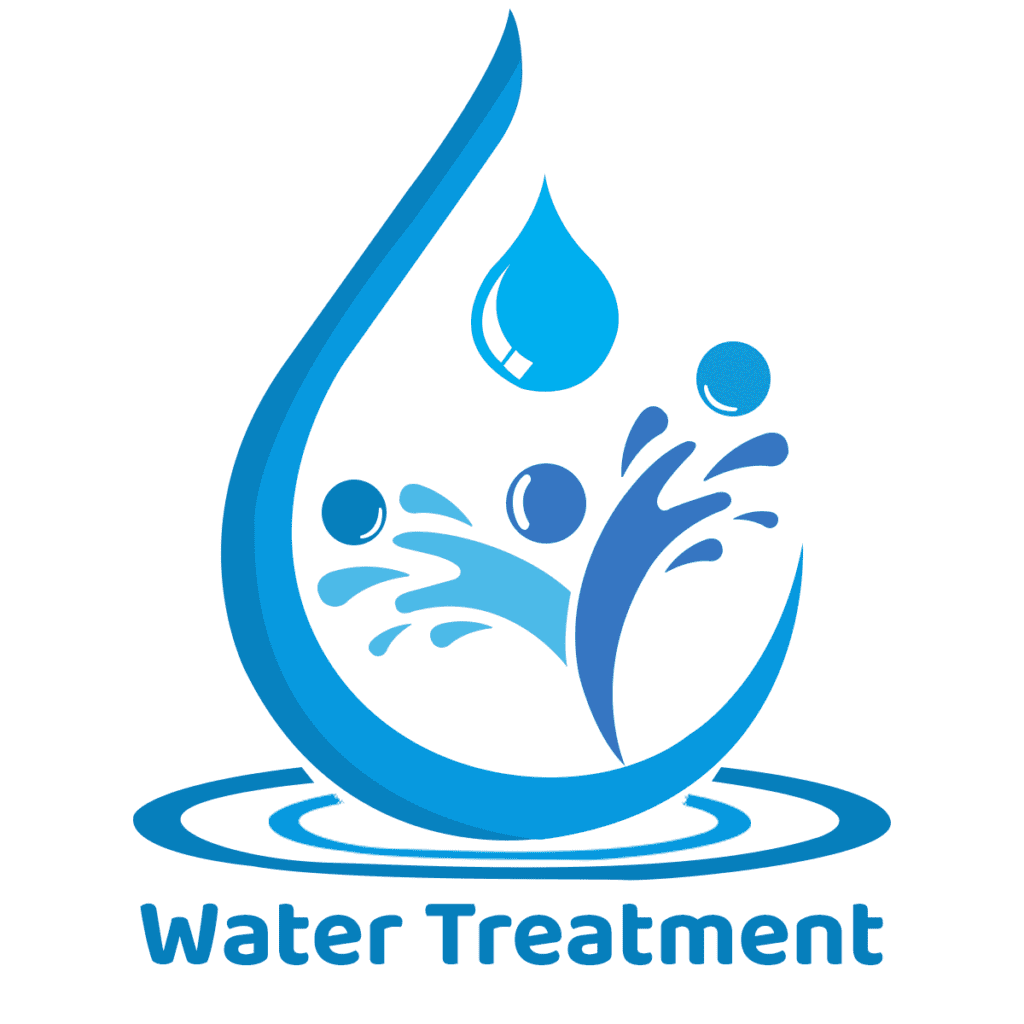Reverse Osmosis (RO) Water Treatment

Reverse Osmosis (RO) is a widely utilized water treatment technology, primarily aimed at removing impurities from water by using a semi-permeable membrane. This report will provide a comprehensive overview of RO technology, its applications, methodologies, challenges, and recent advancements.
Reverse Osmosis (RO) is one of the most effective and widely used water purification methods, delivering high-quality, clean water for drinking, cooking, and industrial applications. Whether in homes, businesses, or industries, RO treatment systems ensure that water is free from contaminants, impurities, and dissolved solids that could harm health or disrupt manufacturing processes.
What is Reverse Osmosis?
Reverse Osmosis is a process that removes contaminants from water by applying pressure to force water molecules through a semi-permeable membrane. This membrane allows the passage of water but blocks larger molecules and impurities, such as salts, bacteria, and other particles.
Reverse Osmosis is a water purification process that uses a semi-permeable membrane to remove dissolved ions, molecules, and larger particles from water. Through this membrane, water is forced by pressure, effectively separating contaminants and leaving behind clean, purified water. Originally developed for desalinating seawater, RO technology has since evolved to become essential in treating a variety of water sources for both residential and industrial needs.
Key Applications of Reverse Osmosis
- Desalination: RO is crucial for converting seawater into freshwater, especially in regions facing freshwater shortages.
- Industrial Water Treatment: Industries often use RO to purify water for manufacturing processes, reducing costs associated with using untreated water.
- Brackish Water Treatment: RO can effectively treat brackish water sources to achieve potable water quality.
- Wastewater Reuse: RO is employed to treat wastewater, allowing for its reuse in agricultural or industrial applications, thereby minimizing environmental impact.
Methodology of Reverse Osmosis Process
- Pre-Treatment: Water is pre-treated to remove larger particles, which can damage the membrane. This can involve filtration and the addition of chemicals to control scale formation.
- High-Pressure Pumping: Pressure is applied to the water to overcome osmotic pressure, forcing it through the membrane.
- Filtration: As water passes through the RO membrane, impurities are filtered out and rejected as brine.
- Post-Treatment: The treated water may undergo additional treatment to adjust pH or mineral content before distribution.
Challenges Associated with RO
- Membrane Fouling: Membranes can become fouled with organic and inorganic materials, which reduces efficiency and requires regular cleaning or replacement.
- Waste Generation: The process generates a concentrated brine waste that must be managed.
- Energy Consumption: Although advancements have reduced energy costs, RO still requires significant energy input, especially when working with high-salinity water.
Recent Advancements in RO Technology
- High-Pressure Reverse Osmosis (HPRO): This variant operates at pressures above 82 bar to treat brine more efficiently, showing promise in improving recovery rates and energy efficiency.
- Hybrid Systems: Combining RO with other treatment processes, such as electrodialysis, to improve overall water recovery rates and reduce operational costs has been explored.
- Antiscalants and Improved Membrane Materials: The development of new materials and antiscalants improves membrane longevity and reduces fouling issues.
How Does Reverse Osmosis Work?
- Pre-Filtration: Before reaching the RO membrane, water passes through a pre-filter, often a sediment filter, to remove larger particles like sand, dirt, and rust. Some systems also use activated carbon filters here to eliminate chlorine and other chemicals that could damage the RO membrane.
- Reverse Osmosis: The pre-filtered water is then pressurized and forced through the semi-permeable RO membrane. This membrane allows only pure water molecules to pass through, blocking contaminants like heavy metals, salts, and chemicals.
- Post-Filtration: After the water passes through the RO membrane, it often goes through a final carbon filter, which removes any remaining odors or tastes, resulting in fresh, pure water.
- Storage and Delivery: Purified water is stored in a tank and delivered through a designated faucet or system for immediate access. Any waste or rejected water is typically sent down the drain.
What Contaminants Does RO Remove?
- Heavy Metals: RO removes lead, mercury, and arsenic, which can be toxic even in small quantities.
- Dissolved Salts and Minerals: Minerals like sodium, potassium, and calcium are filtered out to produce soft, mineral-free water.
- Pathogens: While RO itself doesn’t directly kill bacteria and viruses, it filters out larger pathogens, making water safer to consume when paired with a UV or additional disinfection system.
- Chemical Contaminants: RO removes chlorine, pesticides, and volatile organic compounds (VOCs), which can cause health issues when present in drinking water.
Why is Reverse Osmosis Important?
- Provides Safe Drinking Water: RO purification ensures safe drinking water by removing harmful contaminants. This is particularly valuable in areas where tap water may be of questionable quality or contain harmful additives.
- Improves Water Taste and Odor: By removing impurities and chemicals, RO water tastes cleaner and has no unpleasant odors, enhancing its appeal for drinking and cooking.
- Reduces Health Risks: Heavy metals, pesticides, and industrial chemicals in unfiltered water can lead to chronic health issues. RO systems protect against these contaminants, supporting better long-term health.
- Environmentally Friendly: RO-treated water reduces the need for bottled water, supporting sustainability efforts and decreasing plastic waste.
Applications of Reverse Osmosis
- Residential Use: RO systems are popular in homes, where they are typically installed under the sink to provide purified drinking water, removing contaminants that may affect taste, odor, and health.
- Commercial and Industrial Applications: Industries like pharmaceuticals, food and beverage production, and electronics require ultra-pure water. RO systems are highly effective for these applications, helping ensure product quality and consistency.
- Desalination: RO technology is often used to desalinate seawater in regions where freshwater is scarce, making it a critical solution for countries with limited access to natural freshwater sources.
- Laboratories and Medical Facilities: Medical and scientific facilities use RO-treated water in labs and for dialysis, where water purity is essential for research accuracy and patient safety.
Advantages of Reverse Osmosis
- Highly Effective Purification: RO systems can remove 90-99% of dissolved contaminants, offering one of the highest levels of water purity available.
- Versatile and Scalable: RO systems range from small home units to large industrial plants, making them adaptable to various scales and needs.
- Energy-Efficient: Compared to traditional distillation, RO requires less energy and is more cost-effective, especially when large volumes of water need treatment.
- Minimal Maintenance: RO systems are generally low-maintenance, requiring only periodic filter replacements and occasional membrane changes, depending on usage.
Limitations of Reverse Osmosis
- Wastewater Production: RO systems produce waste, as some water is used to flush contaminants from the membrane. Most residential RO systems can waste up to three gallons of water for every gallon purified, though modern systems are working to reduce this ratio.
- Mineral Removal: RO systems remove not only contaminants but also beneficial minerals. For users concerned about mineral content, re-mineralization filters can be added to reintroduce essential minerals like calcium and magnesium.
- Initial Cost: High-quality RO systems can be costly to install, though long-term savings on bottled water and improved health benefits often offset this cost.
Tips for Maintaining an RO System
- Regular Filter Changes: Change the sediment and carbon filters as recommended by the manufacturer (typically every 6-12 months) to ensure the system remains effective.
- Inspect the RO Membrane: RO membranes generally last 2-3 years, but checking periodically for signs of wear can prevent declines in water quality.
- Sanitize the System: Regularly sanitizing the system, including the storage tank and tubing, prevents bacteria buildup and ensures water quality.
- Monitor Water Pressure: Ensure that water pressure is within the recommended range for the system. Low pressure may require a booster pump, while high pressure might need a pressure regulator to avoid damaging the system.
The Future of Reverse Osmosis Technology
- As technology advances, RO systems are becoming more efficient, sustainable, and versatile:
- Low-Waste Systems: Newer RO models focus on reducing wastewater, helping make RO a more sustainable option.
- Smart RO Systems: With IoT integration, some RO systems offer smart monitoring, automatically alerting users when filters need replacement and tracking water usage.
- Portable RO Units: Compact and portable RO systems are now available, allowing users to have purified water on the go, useful for camping, travel, and emergencies.
Conclusion
Reverse Osmosis (RO) water treatment is an invaluable technology for delivering safe, clean, and reliable water across various applications, from home drinking water to critical industrial processes. With its ability to remove a wide array of contaminants, RO plays a significant role in ensuring water quality and supporting health, environmental sustainability, and industrial efficiency. As advancements continue to make RO systems more efficient and accessible, they will remain a cornerstone of modern water treatment solutions, providing cleaner, safer water for everyone.









